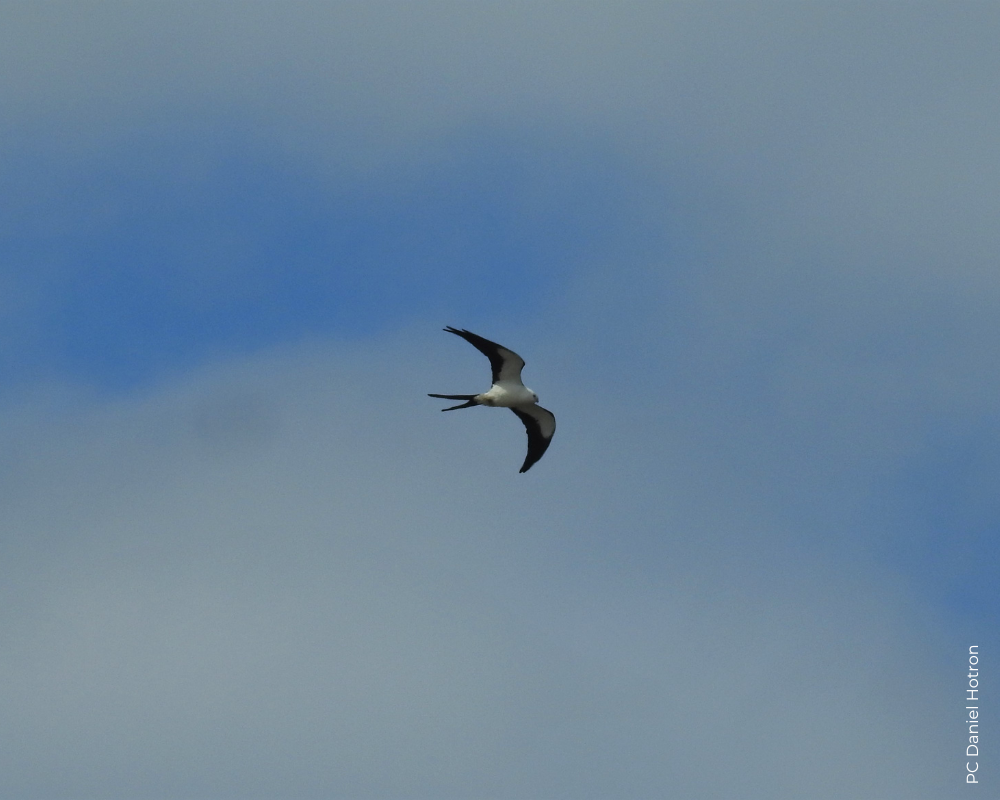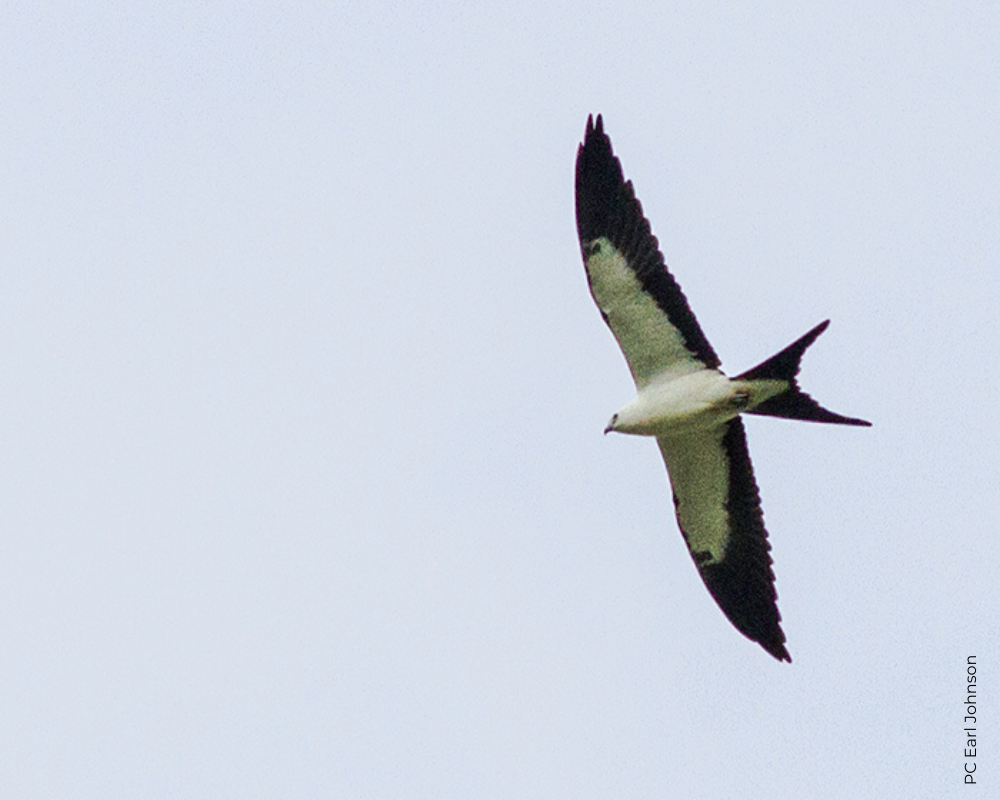Overview
The long forked tail and striking black & white plumage render the Swallow-tailed Kite unmistakable in flight. They are large, graceful raptors that float effortlessly when soaring or hunting on the wing and are highly maneuverable when swooping and diving for dragonflies. They also pluck reptiles, birds, and other prey items directly from treetops. Swallow-tailed Kites are rarely seen perched, except occasionally in the early morning before thermals develop.
Swallow-tailed Kites are fairly common across most of Florida but are local elsewhere along the Gulf Coast. They have withdrawn from their historic breeding range, which spanned the Mississippi floodplain north to Minnesota, due to logging of bottomland forests, agriculture, and human persecution. Swallow-tailed Kites are beginning to return to former breeding areas, especially in east Texas and Louisiana. They are rare but regular vagrants north of their mapped range, mainly seen in late spring.
Swallow-tailed Kites nest in large trees along swampy river systems across the Southeast but regularly stray north and sometimes west of their mapped range, especially in late spring. Swallow-tailed Kites are generally gregarious, nesting in loose colonies and gathering in large communal roosts, especially just prior to fall migration, when over 1000 may stage together at a single site. On the breeding grounds, Swallow-tailed Kites give a shrill, emphatic whistle, “klee klee KLEE!”




